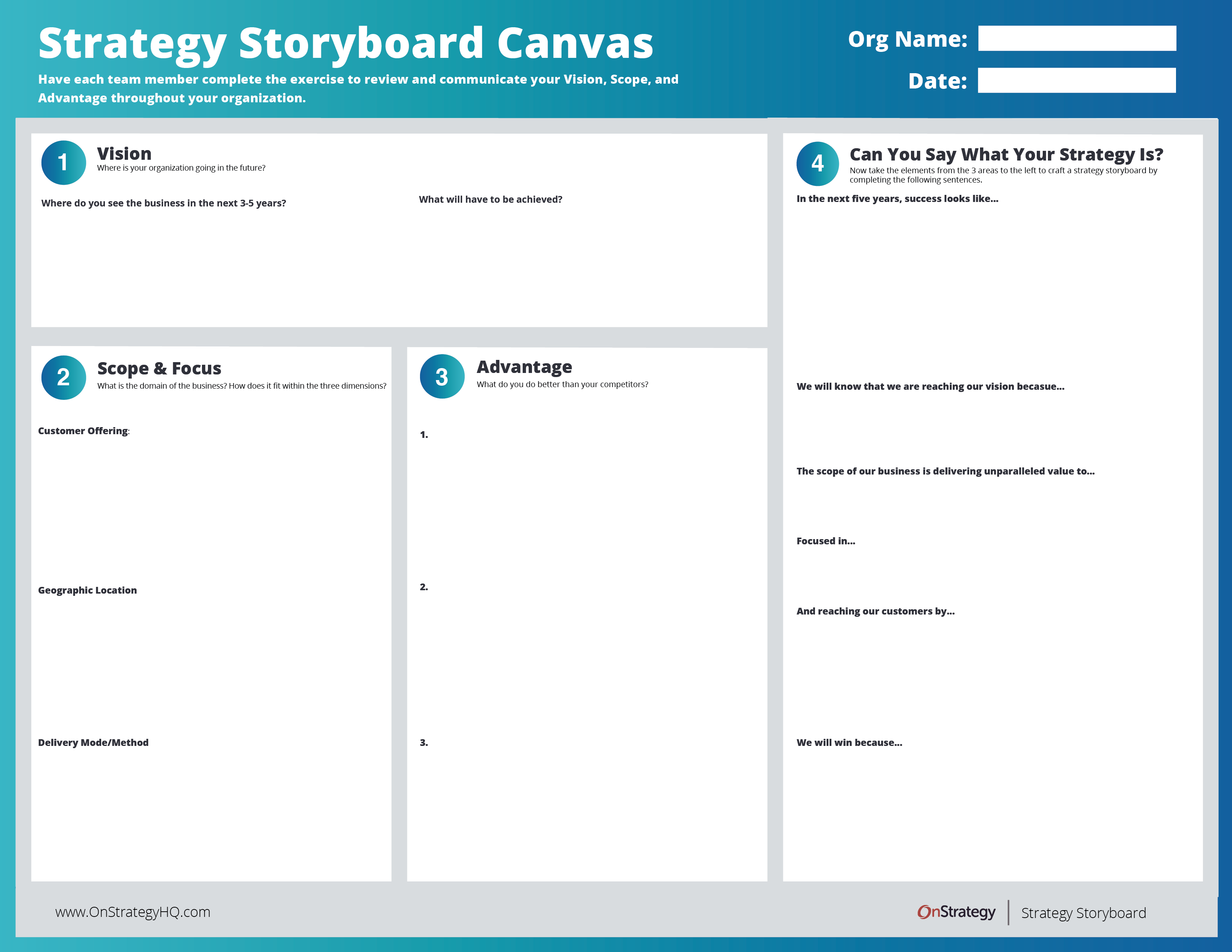Q: How can you use purposeful communication for strategy rollout?
A: Clearly communicating your plan is MANDATORY for successful strategy implementation and execution.
There are many best practices for clearly communicating your plan, including creating a one-page plan, using visual storytelling, and creating consistency in your implementation and review process.
Implementing a strategy often requires effective communication that resonates with all members of an organization. While the process can be intricate, using purposeful communication can ensure everyone is on the same page, driving alignment and commitment to your vision of the future.
There are several ways to ensure purposeful communication is the heartbeat of your strategy rollout. Let’s explore some of the best practices discussed in our Strategy Collaborative session.
One-Page Plans Are Magic
One of our favorite tools for communicating and rolling out any plan is a one-page strategic plan. It’s just that – a simple view of your vision, direction, and how you will get there.
One-page plans are magic because they deliver everything you need to communicate in a single view! We always recommend creating one as you build and implement your plan.
Need help communicating your strategy? Grab this Strategy Storyboard Canvas

Other helpful visual tools — strategy maps & the balanced scorecard.
Find ways to create a visual storytelling tool to depict your strategy. Visual tools can significantly enhance the comprehension of complex topics. Strategically employing tools like balanced scorecards or strategy maps can effectively guide members through a journey, making them understand how their individual roles contribute to the larger vision.
Using strategy maps allows organizations to visually represent their journey, helping individuals understand their unique roles in the broader vision. Such a storytelling approach simplifies the steps needed to realize the strategy, making the process more digestible and relatable.
KPIs help create your story.
In addition to the strategy map and balanced scorecard, creating a one-page plan also makes your strategic plan easily sharable and visually appealing.
You can utilize KPIs by selecting 3-5 core KPIs that are grounded to your overall plan and a one-page plan to make the strategic plan more visually appealing and digestible.
Use Cascading and Cross-Functional Teams as a Means for Communication
Instead of the traditional top-down approach, involving cross-functional teams in strategy communication can promote a sense of shared ownership.
Leadership teams can initiate discussions at high-level town halls, breaking down objectives for every division or department. This cascading approach ensures everyone understands their specific role in the overarching strategy, fostering a sense of collective ownership.
A story often shared throughout MBA courses is the one where President JFK went to everyone at NASA to ask them what their role was with the organization, and even the janitors answered that they were there to send a man to the moon.
The key to this cascading approach is to keep the groups small and ensure that they are headed up by department leaders who are fully bought in. Additionally, pull people in who are good communicators and who know who their audience is and how to convey the message in a way that is meaningful to them.
A Continuous, Rigorous Process Keeps Your Plan Front-and-Center
Rolling out and communicating your plan is one piece of successful implementation. But true agility, understanding, and success comes when your team reviews, refreshes, and adapts your plan consistently.
Establishing a rigorous and consistent process keeps your plan front and center while allowing your organization more contact with your plan and content. The more contact your team has with your plan, the easier it becomes to understand where you’re going and why.
Communication is a Process, Not a Campaign
While many organizations mistake strategy communication as a one-off event, maintaining an ongoing conversation is crucial. It’s essential to avoid a “launch and leave” mentality. Regular updates, especially quarterly, can keep the strategy alive, ensuring continuous alignment and recalibration.
Give Your Strategy a Heartbeat So Others Can Connect with It
Purposeful communication for strategy rollout demands simplicity, visual storytelling, and continuous engagement. Organizations should strive to make strategy everyone’s story, fostering a culture where each member feels a sense of ownership and alignment with the broader vision.
Pro Tip:
Make your strategy a story. Make it memorable. Make it part of the process.
When executed effectively, this approach not only ensures successful strategy implementation, but also allows the strategy to have a heartbeat that your team can connect with.













